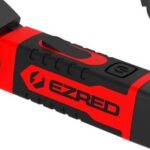Don’t Forget to Inspect a Boat Trailer
Depending on how you plan to use a boat, a trailer can become an important consideration. Regardless of if you choose a bunk or roller-style model, a trailer that’s not roadworthy could cost you hundreds of dollars or more in repairs, so before buying a new-to-you boat and trailer combination, check out the trailer as thoroughly as the boat.
A trailer is badged with a vehicle identification number (VIN) typically etched into the frame or on the decal capacity plate. The capacity information spells out its designed maximum weight and identifies the tires with which it was equipped when new. On an older trailer, the decal can easily be damaged or just plain missing, which can create registration problems. Some states allow the police or DMV to reissue a VIN plate. Others let an owner designate a trailer with a missing VIN as homemade.
Larger axles can carry more weight. For example, a dual-axle trailer rated to carry 3,400 pounds might have a pair of 2.375” axles, each good for 2,200 pounds. Examine welds and connections and make sure that the suspension is creating at least four inches of ground clearance at the lowest point. Leaf springs can rust before the frame.
Fenders shouldn’t be loose, rusted, or torn and need to cover the entire tread width of each tire. Because fenders are often used as a step, make sure they’re still up to the task.
Dry rot gets most trailer tires long before the treads wear out. A dry-rotted tire or one with bulges warrants replacing. Store trailers indoors to keep UV light from deteriorating the sidewall. The trailer’s capacity plate usually has the tire specifications. Wheel bearings shouldn’t wobble or have excessive play.
The connection between the trailer and tow vehicle should be made through a quick-disconnect plug or connector. All wiring should be properly insulated and inspected for chafing or scorch marks. It’s not uncommon for lights to burn out or short. At a minimum, each trailer should have working brake lights and turn signals. In addition, most boat trailers must display red side-marker lamps at the rear and amber side-marker lamps or reflectors toward the front. For trailers wider than 80 inches, three red identification lamps are required on the rear crossmember.
Most states require brakes on a trailer rated to carry 3,000 pounds or more. Some states want brakes on trailers as light as 1,500 pounds, while others let you coast up to 4,500 pounds. A person buying a boat from out of state will want to make sure the trailer’s brakes comply with the laws where the trailer will be registered.
The coupler should have markings on the tongue indicating the approved ball size and its capacity, which should match the information on the capacity plate. Surge brakes are common on trailers weighing more than 3,000 pounds. Electric or electric-over-hydraulic actuators are more common on high-capacity trailers.
Check the safety chains to make sure that they’re the right length to keep the trailer coupler from dragging on the road. A safety pin or a padlock that secures through the coupler latch is a great idea and may also be required while towing.





